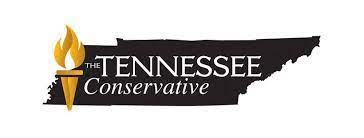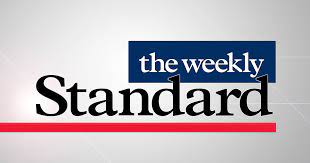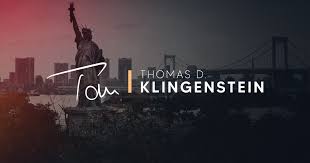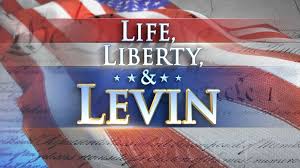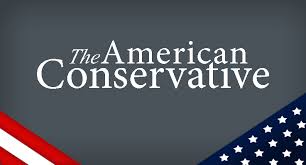Liberty Forum on #MeToo and Sexual Harassment
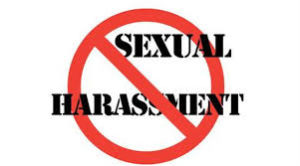
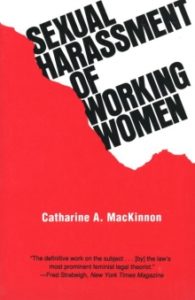
My regular platform, Law & Liberty, recently hosted a “Liberty Forum” on the topic of #MeToo and the development of sexual harassment as a legal claim. The lead essay, entitled “Desire or Dominance?: Sexual Harassment’s Legal Maze,” was by Rachel Lu. The Liberty Forum format calls for seriatim responses to the lead essay. The first commenter was Suzanne Lucas, with an essay entitled “Social Mores Have Changed; Biology Hasn’t.” My response was entitled “Unlawful Discrimination Is Supposed to Be about Group-Based Animus.” Reason‘s Cathy Young also wrote a thoughtful response. Rachel Lu’s concluding essay (to which I posted a comment) is here.
The version appearing on Law & Liberty was slightly edited. I am reprinting below both the condensed version (prior to edits) and a somewhat longer version.
The unedited condensed version:
Sexual Harassment: The Making of a Legal Labyrinth
The phenomenon of workplace “sexual harassment”—unknown prior to the 1970s—raises many complicated issues. Of course, there have been lecherous men making advances toward women, and/or engaging in crude and boorish behavior, since time immemorial. And it will ever be so. My goal is not, however, to excuse men’s bad behavior, but to explore the origins of workplace sexual harassment as a now-ubiquitous legal claim. My account departs from Rachel Lu’s in subtle but potentially important respects.
The story begins in the aftermath of the JFK assassination, when the LBJ administration advanced the long-delayed Civil Rights Act of 1964, over the objections of racist southern Democrats who strongly supported segregation, which was then the norm. Two days before the pivotal floor vote in Congress, a staunch opponent of the civil rights bill, Rep. Howard Smith (D-VA), amended it to add “sex” to the list of characteristics protected from discrimination, hoping that the specter of a federal law requiring equality of the sexes would be a poison pill. Rep. Smith voted against the bill, even as amended, but it passed nevertheless. As a result, the employment provisions of the Civil Rights Act of 1964 (Title VII) prohibited both race and sex discrimination, although the inclusion of the latter was regarded as a fluke—a joke that backfired.[1]
Title VII does not even mention the term “sexual harassment,” which is entirely a judicial and administrative creation, concocted long after Title VII was enacted. The Equal Employment Opportunity Commission, adopting a variant of Catharine MacKinnon’s novel theory, prominently advanced in her 1979 book, [2] invented the claim as a form of sex discrimination. MacKinnon, a radical feminist who later joined forces with Andrea Dworkin to advocate legislation banning pornography—which they defined to include words or images presenting women as “sexual objects”—saw sexual harassment as an expression of “unequal power”: men’s economic dominance of women in the workplace.
MacKinnon recognized that her political and economic goal—to eliminate all differences between the sexes—was incompatible with existing legal theories under Title VII, so she created a new paradigm: the “inequality approach,” which would outlaw “all practices which subordinate women to men.” [3] MacKinnon’s jargon-laden theory was an attack on both patriarchy and capitalist exploitation: “Women historically have been required to exchange sexual services for material survival, in one form or another. Prostitution and marriage as well as sexual harassment in different ways institutionalize this arrangement.” [4]
With left-wing activist Eleanor Norton Holmes at the helm, in 1980 the Deep State apparatchiks at the EEOC adopted MacKinnon’s wacky approach, along with the typology of sexual harassment claims she developed, which have become known as “hostile work environment” and “quid pro quo,” respectively. Neither form of sexual harassment (with so-called “hostile work environment” claims now overwhelmingly predominating in number) can legitimately be derived from the statutory language prohibiting sex discrimination.
How, then, did Title VII’s ban on discrimination become the basis for regulating dirty jokes, sexual innuendo, lewd comments, and other risqué conduct in the workplace, and for treating a supervisor’s sexual entreaties the same as institutional racial bigotry? Maladroit judicial decisions, whether due to well-intentioned groupthink or conscious activism, have produced legal chaos, spawning interminable litigation and the #MeToo meme. Thus, I emphatically agree with Rachel Lu that the legal framework for addressing sexual harassment is “inadequate,” to say the least. It is also terribly confusing. Fixing it requires that we understand what precisely went wrong.
The Civil Rights Act of 1964 was primarily intended to promote racial equality—the focus of the 1960s civil rights movement. To that end, Title VII eliminated racial apartheid in the workplace by prohibiting discrimination on the basis of race (and certain other protected characteristics: color, religion, national origin, and–thanks to Rep. Smith–sex). Even following Brown v. Board of Education in 1954, a decade later, throughout the U.S. (and especially in the south), blacks were disfavored as a group, and were denied many employment and housing opportunities generally available to whites. Blacks were even barred from (or forced to use separate areas of) many privately-owned businesses such as hotels and restaurants. Race discrimination—finally prohibited by federal law—reflected a group-based animus directed against one class (blacks) by another class (whites). That is what “because of race” means—an employer singling out an employee for adverse treatment regarding specific employment actions due to his race.
The same reasoning applies to sex discrimination. Title VII and similar laws do not proscribe unfair treatment, or crass behavior, only certain types of intentional, group-based discrimination. Absent a statutory prohibition, employers are free to do as they please. Congress specified the protected categories, and not all groups or traits are covered. Thus, “sex discrimination” means intentionally denying women employment opportunities generally available to men, because of their sex (and vice versa). Therefore, if one woman is preferred over another woman for a promotion, there logically can be no sex discrimination claim because the beneficiary of the challenged decision was not a man. Consistent with the class-based nature of Title VII, the seminal McDonnell Douglas standard makes the preferential treatment of an employee not in the relevant “protected class” an element of the plaintiff’s prima facie case.
In order to limit government power and protect individual liberty, courts should generally limit the application of a statute to its actual text. Broadening the scope of laws by unmooring them from their express language enables arbitrary application and government overreach. Early on, the Supreme Court ruled—correctly–that employment discrimination based on pregnancy did not violate Title VII because not all female employees get pregnant; sex and pregnancy are not equivalent. [5] Feminists denounced the Court’s holding as a “formalistic conception of discrimination,” [6] but that objection amounts to quarrelling with the result, rather than the reasoning itself. In 1978, Congress amended the statute specifically to include pregnancy, and the Supreme Court—feeling chastened–has been gun-shy ever since.
The Court has subsequently interpreted Title VII expansively. For example, in Price Waterhouse v. Hopkins, [7] the Court ruled that discrimination based on sex covers “sex stereotyping,” thus allowing a suit by a female employee criticized for not being feminine enough—even though not all females fit this profile. The Supreme Court similarly erred in 1986 when it accepted the EEOC’s theory of sexual harassment as a form of sex discrimination in Meritor Savings Bank v. Vinson. [8] Some federal courts of appeals are now construing “sex discrimination” to include sexual orientation discrimination, even though Congress has repeatedly declined to amend Title VII to add sexual orientation as a protected characteristic. (I discuss Hively and Zarda here, here, and here.)
Over the years, courts have made many conceptual and doctrinal errors, creating what Ellen Frankel Paul called a “defective paradigm.” The fundamental problem with sexual harassment law is that sexual attraction is not the same as sex discrimination. I agree with Rachel Lu’s conclusion that “sexual misbehavior really is more properly seen as an inappropriate expression of sexual desire,” but quarrel with some of her intervening analysis. For instance, I dispute Lu’s suggestion that sexual attraction is a form of “discrimination” within the meaning of Title VII, which—as pointed out earlier–doesn’t contain terms such as “unjust” or “inappropriate.” That inapt terminology invites confusion. Title VII proscribes employment discrimination based on certain categories, and otherwise leaves an employer’s inherent discretion undisturbed, regardless of whether it is “just” or “appropriate.”
In fact, the early courts rejecting sexual harassment claims under Title VII, including Judge Robert Bork when he served on the D.C. Circuit, avoided this error. [9] Those judges correctly reasoned that because the alleged harasser targeted some, but not all, female employees for unwanted sexual attention, his conduct did not amount to categorical discrimination “on the basis of sex.” [10] Those courts weren’t suggesting that heterosexual attraction was permitted by Title VII because it is the norm, or that it was appropriate, only that individuals’ personal actions in the workplace did not constitute categorical discrimination by the employer on the basis of sex. There is no indication that in Title VII Congress intended to alter Americans’ basic biological alignment, or corresponding behavior patterns, or to unravel what radical feminists regard as “the larger political economy of heterosexuality,” [11] i.e., the perceived oppressive patriarchy and their purported economic domination under a capitalist system.
To my mind, the salient objection to current sexual harassment law is that innate attraction between the sexes—in all of its various manifestations–is simply not the type of employer animus that Title VII was intended to address. Flirtatious behavior and raunchy banter in the workplace may be inappropriate, clumsily executed, in poor taste, and offensive, but unless Title VII is judicially-rewritten (or amended by Congress) to constitute a workplace etiquette code, such personal conduct does not amount to employment discrimination based on sex. Even though it may occasionally lead to boorish–and even predatory—conduct, individuals’ heterosexual urges and personal chemistry are not comparable to racial and ethnic prejudice or religious bigotry, the evils that Title VII sought to combat. Human sexuality is not akin to racism, contrary to the belief of Second Wave feminists who advocated the current legal regime.
This is not to excuse workplace misbehavior now denominated sexual harassment, which sometimes borders on criminal assault and even rape. Such conduct should be dealt with appropriately through the criminal justice system, common law tort actions (personal injury claims for assault, battery, invasion of privacy, etc., with appropriate consideration of consent, if any), or pursuant to a state or federal statute that expressly addresses—and clearly defines—what we now loosely (and often sloppily) refer to as sexual harassment. Congress abdicates its constitutional authority as lawmaker—thus empowering the administrative state–when it allows unelected bureaucrats at the EEOC to legislate. Judges compound the error by endorsing fanciful (and textually bogus) statutory interpretations.
The absurdity of the derivation of “sexual harassment” from the statutory ban on sex discrimination was revealed in Oncale v. Sundowner Offshore Services [12], where the Supreme Court recognized a claim for “same-sex” sexual harassment. If women can “harass” women, and men can “harass” men, where is the nexus to sex discrimination? How can supervisors who are equally abusive to both men and women—equal opportunity bullies–be deemed to violate Title VII? The incoherence of Oncale demonstrates that Meritor and Harris were based on a faulty interpretation of Title VII. A sure sign that a legal doctrine has taken a wrong turn—like Title IX cases alleging mutually non-consensual sexual encounters–is when it leads to a dead end, or goes aimlessly in circles.
Sexual harassment is indeed a legal maze—a labyrinth of truly mythical proportions. For too long common sense has been sacrificed to the Minotaur of political correctness. The text of Title VII (and early caselaw) provide the thread we can follow to escape–if our lawmakers have the political will.
[1] Title VII states that “It shall be an unlawful employment practice for an employer to fail or refuse to hire or to discharge any individual, or otherwise to discriminate against any individual with respect to his compensation, terms, conditions or privileges of employment, because of such individual’s race, color, religion, sex or national origin.” 42 U.S.C. section 2000e-2(a)(1).
[2] Sexual Harassment of Working Women (1979).
[3] Id. at 4. MacKinnon candidly described her “theory” as “a political strategy to guide legal intervention.” Id. at 127.
[4] Id. at 174-75 (emphasis added).
[5] General Electric Co. v. Gilbert, 429 U.S. 125 (1976); Geduldig v. Aiello, 417 U.S. 484 (1974).
[6] Reva B. Siegel, A Short History of Sexual Harassment, in Directions in Sexual Harassment Law (C. MacKinnon & R. Siegel, eds. 2003), at 13.
[7] 490 U.S. 228 (1989).
[8] 477 U.S. 57 (1986). See also Harris v. Forklift Systems, 510 U.S. 17 (1993).
[9] See Vinson v. Taylor, 760 F. 2d 1330, 1333 n.7 (D.C. Cir. 1985).
[10] See Barnes v. Train, 13 F.E.P. Cases (BNA) 123, 124 (D.D.C. 1974); Corne v. Bausch & Lomb, Inc., 390 F. Supp. 161, 163 (D. Ariz. 1975); Miller v. Bank of America, 418 F. Supp. 233, 234-36 (N.D. Cal. 1976); Tomkins v. Public Service Electric & Gas Co., 422 F. Supp. 553, 556-57 (D.N.J. 1976).
[11] Siegel, supra, at 9.
[12] 523 U.S. 75 (1998). The Court’s insistence that same-race (i.e., black on black) “discrimination” is possible under Title VII reveals it has strayed from the group-based foundation of Title VII. If true, whites can complain of discrimination by other whites, women against other women, men against other men, etc. If Oncale’s logic is taken even further, a black alleging discrimination could complain of disparate treatment if the preferred employee was also black, and so on. This broad construction converts Title VII from a group-based discrimination law into a warrant for regulating the fairness of individual employment decisions, which was plainly not Congress’s intent. Even feminists are confounded by Oncale. Siegel, supra, at 23-26.
The longer version:
Sexual Harassment: The Making of a Legal Labyrinth
We did not arrive at #MeToo overnight
The phenomenon of workplace “sexual harassment”—unknown prior to the 1970s—raises many complicated issues. Of course, there have been lecherous men making advances toward women, and/or engaging in crude and boorish behavior, since time immemorial. And it will ever be so.
The human libido is a powerful force, and the desire for sexual gratification is among our most primal impulses. Being in a position of power can certainly embolden a person predisposed to sexual predation. In the past, such base temptations—and sexual attraction between men and women generally–were regulated primarily through morality (chastity, monogamy, probity), social mores (modesty, restraint, decorum, chivalry, early marriage), religious beliefs (stigmatizing fornication, birth control, adultery, and divorce as sinful), and cultural norms (emphasizing the importance of gentlemanly qualities such as fidelity, courtesy, and respect, and—importantly—traditional gender roles limiting women’s participation in the outside workforce).
In America, all of those constraints were weakened or changed during the 1960s.
This momentous shift unleashed the human libido (male and female), and simultaneously encouraged many women—now available to men as co-workers or subordinates–to celebrate their new-found sexuality by dressing provocatively and engaging in pre-marital sex. The advent of the birth control pill turbocharged the Zeitgeist. Playboy and Cosmopolitan were equally libidinous, except that Hugh Hefner’s lifestyle magazine peaked in 1972 and is now defunct, while Cosmo—racy sex tips and all—has a circulation (print and digital) of over 17 million. Even publications for girls, such as Teen Vogue, now feature vile, sexually-explicit content. My goal is not, however, to excuse men’s bad behavior, suggest equivalence between the sexes, or unpack the women’s rights movement and the sexual revolution, but to talk about the origins of workplace sexual harassment as a now-ubiquitous legal claim. My account departs from Rachel Lu’s in subtle but potentially important respects.
The story begins in the aftermath of the JFK assassination, when the LBJ administration advanced the long-delayed Civil Rights Act of 1964, over the objections of racist southern Democrats who strongly supported segregation, which was then the norm. Two days before the pivotal floor vote in Congress, a staunch opponent of the civil rights bill, Rep. Howard Smith (D-VA), amended it to add “sex” to the list of characteristics protected from discrimination, hoping that the specter of a federal law requiring equality of the sexes would be a poison pill. Rep. Smith voted against the bill, even as amended, but it passed nevertheless. As a result, the employment provisions of the Civil Rights Act of 1964 (Title VII) prohibited both race and sex discrimination, although the inclusion of the latter was regarded as a fluke.[1]
Title VII does not even mention the term “sexual harassment,” which is entirely a judicial and administrative creation, concocted long after Title VII was enacted. The Equal Employment Opportunity Commission, adopting a variant of Catherine MacKinnon’s novel theory, prominently advanced in her 1979 book, [2] invented the claim as a form of sex discrimination. MacKinnon, a radical feminist who later joined forces with Andrea Dworkin to advocate legislation banning pornography—which they defined to include words or images presenting women as “sexual objects”—saw sexual harassment as an expression of “unequal power”: men’s economic dominance of women in the workplace. MacKinnon recognized that her political and economic goal—to eliminate all differences between the sexes—was incompatible with existing legal theories under Title VII, so she created a new paradigm: the “inequality approach,” which would outlaw “all practices which subordinate women to men.” [3] MacKinnon’s jargon-laden theory was an attack on both patriarchy and capitalist exploitation: “Women historically have been required to exchange sexual services for material survival, in one form or another. Prostitution and marriage as well as sexual harassment in different ways institutionalize this arrangement.” [4]
With left-wing activist Eleanor Norton Holmes at the helm, in 1980 the Deep State apparatchiks at the EEOC adopted MacKinnon’s wacky approach (along with the typology of sexual harassment claims she developed, which have become known as “hostile work environment” and “quid pro quo,” respectively), even though some legal critics dismissed MacKinnon’s theory as “ambiguous, unworkable, and unnecessary,” and predicted that “her inequality standard has no chance of being adopted in this century.” Neither form of sexual harassment (with so-called “hostile work environment” claims now overwhelmingly predominating in number) can legitimately be derived from the statutory language prohibiting sex discrimination.
How, then, did Title VII’s ban on discrimination become the basis for regulating dirty jokes, sexual innuendo, lewd comments, and other risqué conduct in the workplace, and for treating a supervisor’s sexual entreaties the same as institutional racial bigotry? Maladroit judicial decisions, whether due to well-intentioned groupthink or conscious activism, have produced legal chaos, spawning interminable litigation and the #MeToo meme. Thus, I emphatically agree with Rachel Lu that the legal framework for addressing sexual harassment is “inadequate,” to say the least. Fixing it requires that we understand what went wrong.
The Civil Rights Act of 1964 was primarily intended to promote racial equality—the focus of the 1960s civil rights movement. To that end, Title VII eliminated racial apartheid in the workplace by prohibiting discrimination on the basis of race (and certain other protected characteristics: color, religion, national origin, and–thanks to Rep. Smith–sex). Even following Brown v. Board of Education in 1954, a decade later, throughout the U.S. (and especially in the south), blacks were disfavored as a group, were denied many employment and housing opportunities generally available to whites. Blacks were even barred from (or forced to use separate areas of) many privately-owned businesses such as hotels and restaurants. Race discrimination—finally prohibited by federal law—reflected a group-based animus directed against one class (blacks) by another class (whites). That is what “because of race” means—an employer singling out an employee for adverse treatment regarding specific employment actions due to his race.
The same reasoning applies to sex discrimination. Title VII and similar laws do not proscribe unfair treatment, or crass behavior, only certain types of intentional, group-based discrimination. Absent a statutory prohibition, employers are free to do as they please. Congress specified the protected categories, and not all groups or traits are covered. Thus, “sex discrimination” means intentionally denying women employment opportunities generally available to men, because of their sex (and vice versa). Therefore, if one woman is preferred over another woman for a promotion, there logically can be no sex discrimination claim because the beneficiary of the challenged decision was not a man. Consistent with the class-based nature of Title VII, the seminal McDonnell Douglas standard makes the preferential treatment of an employee not in the relevant “protected class” an element of the plaintiff’s prima facie case.
In order to limit government power and protect individual liberty, courts should generally limit the application of a statute to its actual text. Broadening the scope of laws by unmooring them from their express language enables arbitrary application and government overreach. Early on, the Supreme Court ruled—correctly–that employment discrimination based on pregnancy did not violate Title VII because not all female employees get pregnant; sex and pregnancy are not equivalent. [5] Feminists denounced the Court’s holding as a “formalistic conception of discrimination,” [6] but that objection amounts to quarrelling with the result, rather than the reasoning itself. In 1978, Congress amended the statute specifically to include pregnancy, and the Supreme Court—feeling chastened–has been gun-shy ever since.
Usually at the behest of the EEOC—the instigator of many dubious doctrines, including “disparate impact theory”[7] and countenancing “reverse discrimination”[8]–the Court has subsequently interpreted Title VII expansively. For example, in Price Waterhouse v. Hopkins, [9] the Court ruled that discrimination based on sex covers “sex stereotyping,” thus allowing a suit by a female employee criticized for not being feminine enough—even though not all females fit this profile. The Supreme Court similarly erred in 1986 when it accepted the EEOC’s theory of sexual harassment as a form of sex discrimination in Meritor Savings Bank v. Vinson. [10] Some federal courts of appeals are now construing “sex discrimination” to include sexual orientation discrimination, even though Congress has repeatedly declined to amend Title VII to add sexual orientation as a protected characteristic. (I discuss Hively and Zarda here, here, and here.)
Over the years, courts have made many conceptual and doctrinal errors, creating what Ellen Frankel Paul called a “defective paradigm.” The fundamental problem with sexual harassment law is that sexual attraction is not the same as sex discrimination. I agree with Rachel Lu’s conclusion that “sexual misbehavior really is more properly seen as an inappropriate expression of sexual desire,” but quibble with some of her analysis along the way. For instance, I dispute Lu’s suggestion that sexual attraction is a form of “discrimination” within the meaning of Title VII, which—as pointed out earlier–doesn’t contain terms such as “unjust” or “inappropriate.” That inapt terminology invites confusion. Title VII proscribes employment discrimination based on certain categories, and otherwise leaves an employer’s inherent discretion undisturbed, regardless of whether it is “just” or “appropriate.”
In fact, the early courts rejecting sexual harassment claims under Title VII, including Judge Robert Bork when he served on the D.C. Circuit, [10a] avoided this error. They correctly reasoned that because the harasser targeted some, but not all, female employees for unwanted sexual attention, his conduct did not amount to categorical discrimination “on the basis of sex.” [11] These courts weren’t suggesting that heterosexual attraction was permitted by Title VII because it is the norm, or that it was appropriate, only that individuals’ personal actions in the workplace did not constitute categorical discrimination by the employer on the basis of sex. Heterosexual attraction may in an abstract sense be considered a form of discrimination, but there is no indication that in Title VII Congress intended to alter Americans’ basic biological alignment, or corresponding behavior patterns, or to unravel what radical feminists regard as “the larger political economy of heterosexuality,” [12] i.e., oppressive patriarchy and economic domination.
To my mind, the salient objection to current sexual harassment law is that innate attraction between the sexes—in all of its various manifestations–is simply not the type of employer animus that Title VII was intended to address. Flirtatious behavior and raunchy banter in the workplace may be inappropriate, clumsily executed, in poor taste, and offensive, but unless Title VII is judicially-rewritten (or amended by Congress) to constitute a workplace etiquette code, such personal conduct does not amount to employment discrimination based on sex. Even though it may occasionally lead to boorish–and even predatory—conduct, individuals’ heterosexual urges and personal chemistry are not comparable to racial and ethnic prejudice or religious bigotry, the evils that Title VII sought to combat. Human sexuality is not akin to racism, contrary to the belief of Second Wave feminists who advocated the current legal regime.
Some radical feminists admit that the current sexual harassment jurisprudence is strained, albeit in the context of criticizing courts for not going far enough:
When the sex discrimination in sexual harassment is conceptualized as a form of desire (selecting appropriately sexed bodies given the nature of one’s orientation), the act of differentiation that makes sexual harassment sex discrimination would appear to be a normal, natural, and fundamentally benign feature of social life. On this account, the harm of sexual harassment is somehow incidental to the practice of sex discrimination; the harm arises from an act of sexual coercion that just happens to be inflicted on a person with a body sexed female….And so, as antidiscrimination law recognizes sexual harassment as sex discrimination, it never acknowledges the power dynamic that women over two centuries have described: the way that men extracting sex from economically dependent women reiterate a coercive relationship that organizes heterosexual relations in marriage and the market both. Sexual harassment would be sex discrimination on this account, not because of how it sorts sexed bodies, but because of how this form of coercion, iterated across social institutions, constructs the· dignitary and material meanings of sex. [13]
To fit within the meaning of sex discrimination in Title VII, the concept of “sexual harassment” would have to be de-coupled, and limited to situations in which (a) a male supervisor intentionally subjected a female subordinate (b) to unreasonably obnoxious behavior, in the nature of “hazing” (c) in a manner different than comparable male employees (d) in order to deny the subordinate tangible employment opportunities (by, for example, inducing her to quit or seek a transfer to another department) (e) because of the subordinate’s sex (or, conceivably, vice versa). This type of conduct occurred in some male-dominated manufacturing and industrial facilities (such as textile plants) when females entered the American workforce decades ago, but is now rare. The scenario outlined above is harassment based on sex, a true form of discrimination (analogous to racial harassment). The rest of what we call “sexual harassment” is just feminist social engineering, beyond the purview of Title VII. [14]
This is not to excuse workplace misbehavior now denominated sexual harassment, which sometimes borders on criminal assault and even rape. Such conduct should be dealt with appropriately through the criminal justice system, common law tort actions (personal injury claims for assault, battery, invasion of privacy, etc., with appropriate consideration of consent, if any), or pursuant to a state or federal statute that expressly addresses—and clearly defines—what we now loosely (and often sloppily) refer to as sexual harassment. (California has enacted such a statute.) Congress abdicates its constitutional authority as lawmaker—thus empowering the administrative state–when it allows unelected bureaucrats at the EEOC to legislate. Judges compound the error by endorsing fanciful (and textually bogus) statutory interpretations.
The absurdity of the derivation of “sexual harassment” from the statutory ban on sex discrimination was revealed in Oncale v. Sundowner Offshore Services [15], where the Supreme Court recognized a claim for “same-sex” sexual harassment. If women can “harass” women, and men can “harass” men, where is the nexus to sex discrimination? How can supervisors who are equally abusive to both men and women—equal opportunity bullies–be deemed to violate Title VII? The incoherence of Oncale demonstrates that Meritor and Harris were based on a faulty interpretation of Title VII. A sure sign that a legal doctrine has taken a wrong turn—like Title IX cases alleging mutually non-consensual sexual encounters–is when it leads to a dead end, or goes aimlessly in circles.
Sexual harassment is indeed a legal maze—a labyrinth of truly mythical proportions. For too long common sense has been sacrificed to the Minotaur of political correctness. The text of Title VII (and early caselaw) provide the thread we can follow to escape.
[1] Title VII states that “It shall be an unlawful employment practice for an employer to fail or refuse to hire or to discharge any individual, or otherwise to discriminate against any individual with respect to his compensation, terms, conditions or privileges of employment, because of such individual’s race, color, religion, sex or national origin.” 42 U.S.C. section 2000e-2(a)(1).
[2] Sexual Harassment of Working Women (1979).
[3] Id. at 4. MacKinnon candidly described her “theory” as “a political strategy to guide legal intervention.” Id. at 127.
[4] Id. at 174-75 (emphasis added). Indeed, traditional gender roles—“dominance eroticized,” in MacKinnon’s words–constitute an “oppressive institution.” Id. at 90, 162. Because of this structure of male domination, MacKinnon maintained that all interactions between individual men and women on the job “help to perpetuate women’s subordinate place in the workplace and in society as a whole.” Id. at 89.
[5] General Electric Co. v. Gilbert, 429 U.S. 125 (1976); Geduldig v. Aiello, 417 U.S. 484 (1974).
[6] Reva B. Siegel, A Short History of Sexual Harassment, in Directions in Sexual Harassment Law (C. MacKinnon & R. Siegel, eds. 2003), at 13.
[7]Griggs v. Duke Power Co., 401 U.S. 242 (1971).
[8] The “reverse discrimination” double-standard is examined at length in Herman Belz, Equality Transformed (1991).
[9] 490 U.S. 228 (1989).
[10] 477 U.S. 57 (1986). See also Harris v. Forklift Systems, 510 U.S. 17 (1993).
[10a] Vinson v. Taylor, 760 F. 2d 1330, 1333 n.7 (D.C. Cir. 1985).
[11] See Barnes v. Train, 13 F.E.P. Cases (BNA) 123, 124 (D.D.C. 1974); Corne v. Bausch & Lomb, Inc., 390 F. Supp. 161, 163 (D. Ariz. 1975); Miller v. Bank of America, 418 F. Supp. 233, 234-36 (N.D. Cal. 1976); Tomkins v. Public Service Electric & Gas Co., 422 F. Supp. 553, 556-57 (D.N.J. 1976).
[12] Siegel, supra, at 9.
[13] Id. at 17-18 (emphasis added).
[14] Feminists acknowledge that “judgments about whether practices discriminate ‘on the basis’ of sex or race may depend on evolving social intuitions about whether a practice unjustly perpetuates a status regime, rather than formal characteristics of the practice itself, as antidiscrimination discourse leads us to believe.” Siegel, supra, at 16. The development of the current law of sexual harassment, in other words, was a “social construction,” a fancy term for “made up.” Id.
[15] 523 U.S. 75 (1998). The Court’s insistence that same-race (i.e., black on black) “discrimination” is possible under Title VII reveals it has strayed from the group-based foundation of Title VII. If true, whites can complain of discrimination by other whites, women against other women, men against other men, etc. If Oncale’s logic is taken even further, a black alleging discrimination could complain of disparate treatment if the preferred employee was also black, and so on. This broad construction converts Title VII from a group-based discrimination law into a warrant for regulating the fairness of individual employment decisions, which was plainly not Congress’s intent. Even feminists are confounded by Oncale. Siegel, supra, at 23-26.

